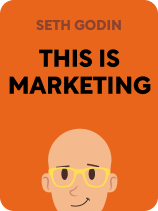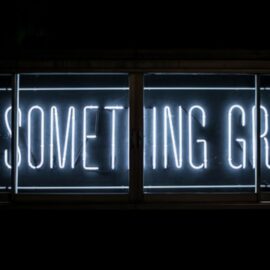

This article is an excerpt from the Shortform book guide to "This Is Marketing" by Seth Godin. Shortform has the world's best summaries and analyses of books you should be reading.
Like this article? Sign up for a free trial here.
Should you try to sell your product to everyone? What’s the best way to allocate your marketing budget?
Seth Godin says that, to be effective at marketing, you must first understand what people need and then seek to fill that need. But, you can’t be all things to all people, so you must apply focus to your marketing efforts. You have to identify your core audience and serve them well.
Read more to understand what Godin means by your “smallest viable market.”
Focus on Your Smallest Viable Market
Godin suggests that most people, regardless of age, gender, or geography, are driven by the same basic human needs, things like safety, security, belonging, or respect. Godin argues that these desires are universal and apply to people from all walks of life but look different depending on whom you’re speaking to. For one person, security might mean a high-quality life insurance policy, while for another it’s an in-home video surveillance system or a paid-off mortgage. By understanding people’s most basic emotional needs, marketers can create products and services that meet those desires, and, by doing so, offer them a solution to their problem.
But, which people are you trying to help? According to Godin, effective marketers don’t try to reach everyone. Instead, they focus on serving a specific group of people well. Godin argues that, to be an effective marketer, you need to focus on your core audience, what he describes as your smallest viable market.
According to Godin, your smallest viable market is the smallest group of people who share a common need or desire that can sustain your business or project. Depending on your product or service, your smallest viable market might be coffee lovers passionate about specialty coffee beans or DIY enthusiasts new to woodworking. He explains that by focusing on your smallest viable market, you’ll be able to develop a deeper understanding of your customers’ needs and wants and create products and services that best address those needs. This approach allows you to stand out in a crowded marketplace and build a loyal customer base that will help you grow your business.
(Shortform note: Alexander Osterwalder and Yves Pigneur (Business Model Generation) suggest that you may have more than one core audience, what they call “customer segments.” The authors explain that your potential customers may represent different customer segments if you need to: create different products and services to meet their needs, reach them through different channels of distribution, develop different types of relationships with them, or adapt your pricing structures to accommodate their needs.)
Your smallest viable market should be defined by a shared value system (what Godin refers to as their “worldview”) rather than demographic traits. Demographic traits may vary, but shared values transcend those differences and are more influential in driving meaningful connections and engagement. By focusing on shared values, you can create a loyal community based on a strong foundation of shared ideals. For example, an eco-friendly clothing brand may target individuals who prioritize sustainability and environmental consciousness, regardless of their age, gender, or location.
(Shortform note: Understanding the values of your audience is essential because values play a significant role in how people express their identities. Customers seek products that align with and express who they are. This is evident in the success of brands with loyal superfans, as they’ve effectively associated their products with specific images or lifestyles. For instance, fans of Harley-Davidson connect the brand with notions of individual freedom and an outlaw biker aesthetic, while Apple fans associate the brand with creativity and innovation. Interestingly, researchers have discovered that consumer preferences in America are even dividing along political lines, with Republicans and Democrats opting for different brands of jeans.)

———End of Preview———
Like what you just read? Read the rest of the world's best book summary and analysis of Seth Godin's "This Is Marketing" at Shortform.
Here's what you'll find in our full This Is Marketing summary:
- Why traditional marketing strategies are no longer effective
- Why you should aim to build trust, authenticity, and empathy with customers
- Guiding principles for successful marketing in the modern age






